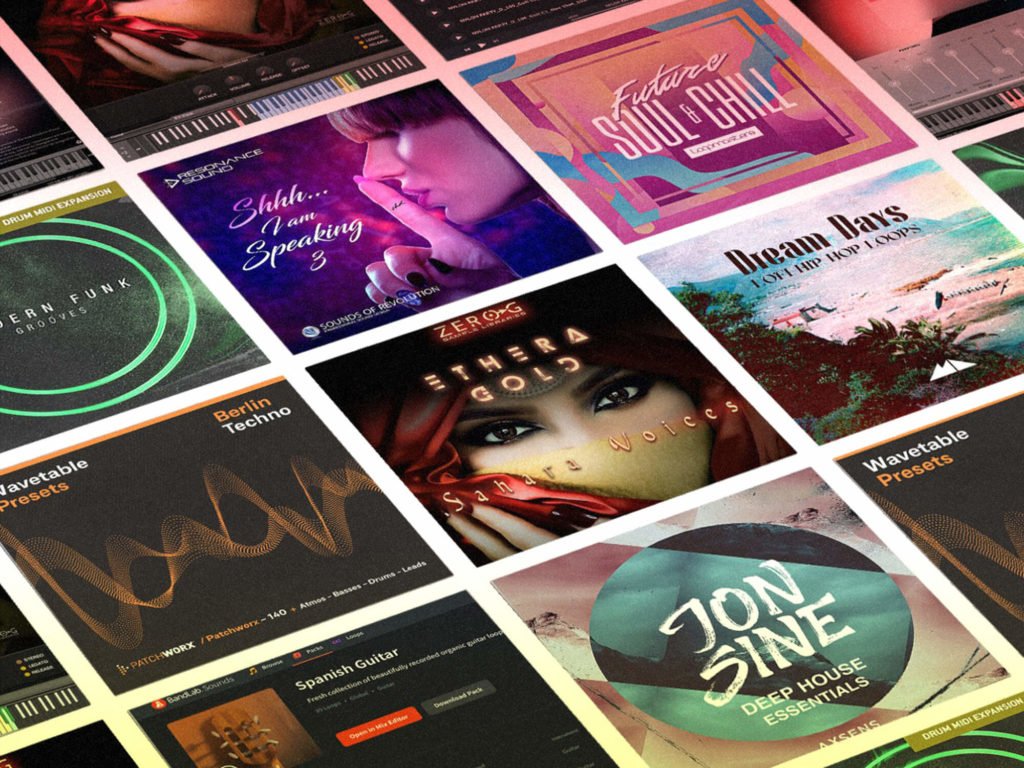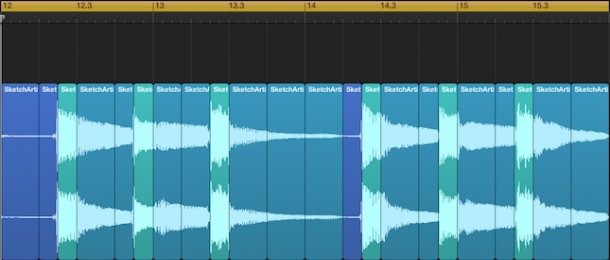Starting a song (or track) can be very intimidating – especially if you’re not feeling inspired. Do you ever struggle to come up with original ideas for your music? Maybe you find a blank DAW project COMPLETELY INTIMIDATING! I know I used to.
Recently we covered strategies for finishing your music and today, I’m going to share with you 11 song-starting hacks I’ve developed to enable you to start a song and come up with song ideas at any time without even needing to be inspired.
It’s a skill unto itself – and super-important if you rely on music production for your living – or even if you just want to become really good at production for pleasure’s sake!
Just follow these 11 steps and you’ll soon get into the swing of things…
Start a Song Even If You Don’t Feel Inspired
Inspiration is wonderful, but she is a fickle mistress – she can strike when you least expect it – or leave you for weeks on end.
This means as music producers we can’t RELY or wait for inspiration before starting a new song – especially if we have record labels or studio partners relying on us. Quite often, we just need a starting-off point to get the idea started, and we’ll get into the flow of things.
Here are my 11 easy to follow hacks on how to start a song that’s I’ve developed from producing music full-time as a living for many years…
Create Inspiration Playlists

My first port of call if I’m lacking any sort of inspiration is to refer to my inspiration playlists. What are these? Basically, playlists I’ve built within my media player of tracks that I absolutely LOVE for whatever reason.
It could be just one element of a track you love – or the entire thing. It doesn’t matter, as long as it gets your blood pumping.
You might take one idea from one of the tracks, or combine a couple of styles together to create something new – these are great ways to help jolt your creative juices into action.
Use Midi Packs
“Want to write a killer song? I’ve got you!” – we’ve all seen the ads, but MIDI packs are actually a great way to start a new song if you’ve not feeling inspired.

These packs include hundreds or thousands of MIDI files of chord progressions and melodies, and you just drag and drop them into your DAW.
A lot of producers “pooh-pooh” them as cheating, but they can be a great way to start a new idea even if you don’t use a whole chord progression or melody; you can change the key, or just grab one or two parts and switch them around – the point is you get something to give you that excited feeling and get the ball rolling.
And it’s not cheating: you could listen to two tracks that were started from the same chord progression and have no idea, as there are a thousand other decisions that result in the final track.
Sample an Old Track
Much like using MIDI packs, some producers view this as cheating. I find this ridiculous – House and Hip Hop were born from sampling other people’s music, and then re-imagining it into something fresh and exciting.
Listening to and sampling parts from older records from 10, 20, or even 60 and 70 years ago can be a fantastic way to draw inspiration from the past.

You could use a recognisable instrumental or vocal loop (although beware of copyright infringement) or even just a repeating texture or drum beat to get your juices flowing.
It can also add a rich layer of texture to your song – making sure it doesn’t sound too clean and clinical which can happen if you just use modern synths and samples.
Start a Song with a Loop
If you buy a sample pack, there are quite often music loops included (e.g. bass lines, melodies, chord progressions, arpeggios, etc.). Listening through these until one sparks your inspiration is a great way to start a song.
Not only that, but – as with MIDI packs – you don’t have to use the loop in its original form. You could just use one part of it, you could change the key, or you could hack it up and switch bits around until you’ve got something original and inspiring.
Limit Yourself
Limitation breeds creativity. Orson Welles – the famous film director – is once quoted as saying: ““If you give somebody constraints, it’s easier to be creative. The enemy of art is the absence of limitation.” – and I’m a big believer of this.
If you have infinite time, infinite resources, infinite samples and presets, the chances are you’re never going to create anything. So limit yourself!
You might:
- give your self a strict deadline to come up with a 16-bar loop (like, 30 minutes);
- limit yourself to only using a grand piano to come up with the melody, chords and bass line;
- limit yourself to 8 tracks to write the whole song.
Whatever you limit, it can be a great way to force yourself into creating something.
Sing/Hum a Melody

Singing or humming a melody can be a great way to tap into your sub-conscious and not program in every element into the piano roll editor.
Even if you can’t sing well (I can’t) as long as you can hold enough of a tune that – once recorded – you can translate into MIDI notes, that’s enough to get things rolling.
If you set-up a loop with multiple takes, too, you can just keep on jamming, and then pick the best parts to put into a melody or bass line.
I recommend at least loading in a drum loop (if you already have a chord progression it’s even easier), so you have something to sing or hum over.
Beatboxing
Much like singing or humming a melody, spitting out some beats can be a great way to get things started. They don’t have to sound great, but you might find something you can use.
What I find best is to get into a flow and lose myself – to not be self-conscious.
You can record it into your smart phone, or directly into your DAW. Again, looping the DAW with multiple takes is the best option.
Record some Foley

Foley is technically when film-makers add audio to a film after it’s been recorded, but in this context I mean just recording real sounds from around your environment.
Maybe is the chatter of crowds in the street, or maybe it’s a thunder storm or rain forest, or crickets at night.
Whatever it is, using your smart phone or a field recorder to capture something unique is a great habit to get into.
Not only will you have some unique sounds that no-one else in the world has, but when you listen back to them in the future, they’ll spark memories, which in turn spark emotion, which in turn can spark inspiration.
Browse Presets
Sometimes simply browsing through synth presets can spark off an idea. If you have a MIDI keyboard, you can just hit one note over an over whilst scrolling through a preset pack until you hear a sound that you think just sounds awesome.
That can be enough to get the ball rolling with your song or track!
Flip a Sound
This is when you’ve already programmed in some MIDI notes (or have dragged them in from a pack), and you simply switch out the sound until you find something that inspires you.
Scrolling through the synth presets of one synth is the simplest and quickest way, but you could even switch out the instrument (e.g. use a different synth, or a sampler instead).
Use the Session View to Start Your Song

This is specific to Ableton Live, but there are other similar function is some of the other Digital Audio Workstations (like “Blocks” in Reason).
The idea here is to create (or find) lots of different loops that work together, and then trigger different clips with eachother until you find some ideas that work really well.
Using hardware like the Push 2 can make this even more tactile and fun, and you can record everything into arrangement view to make sure you never miss any choice moments from your jamming.
–
I hope you use some of these ideas to start your song. Let me know in the comments below which one is your favourite – or if you’ve got any ideas for song starting that I’ve missed!
